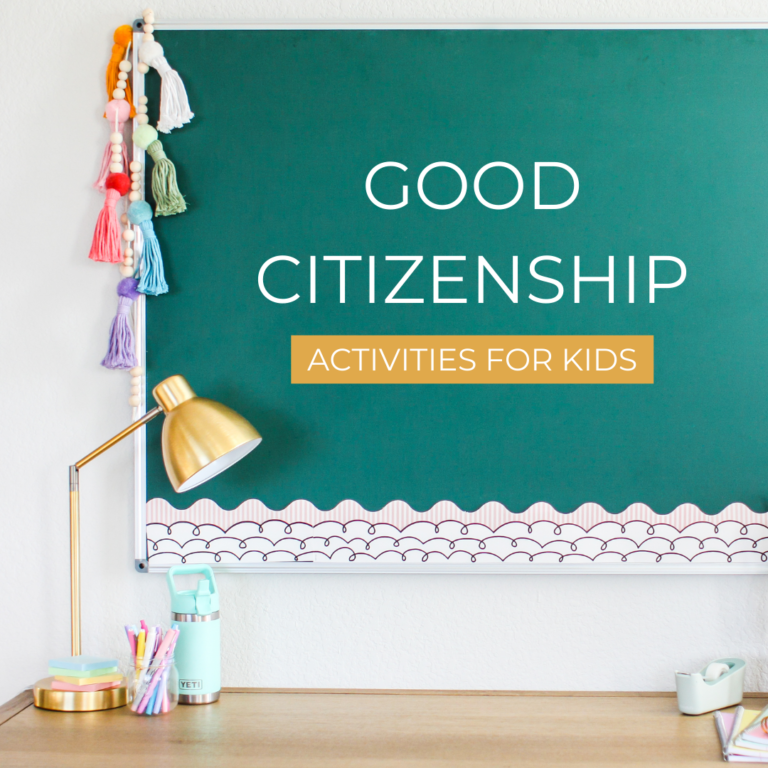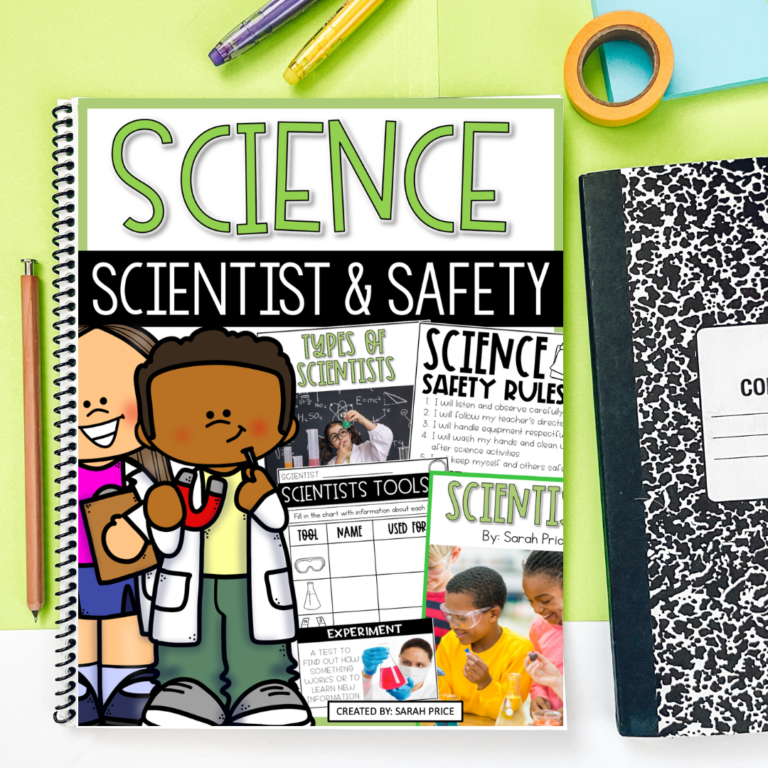Planning Engaging Animal Adaptations Lessons: An Ultimate Guide
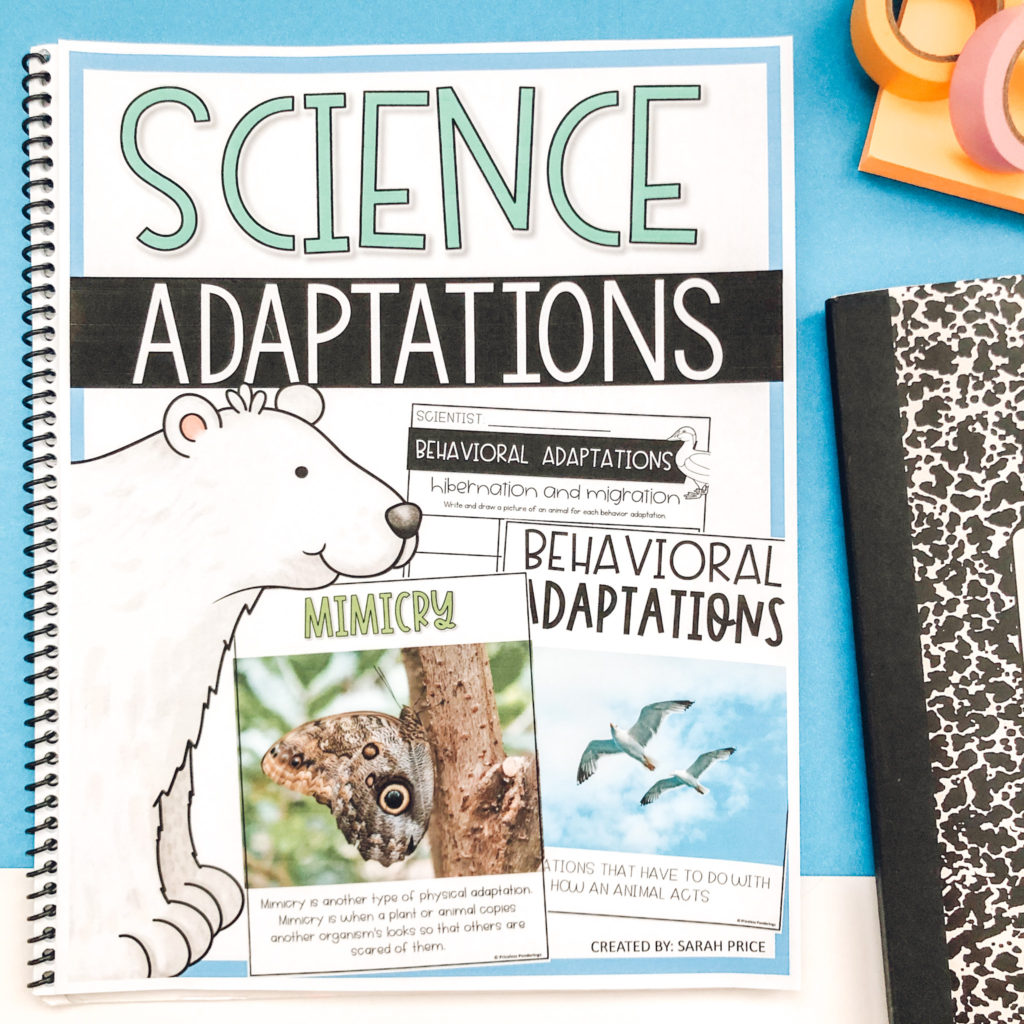
Gathering fun activities while planning animal adaptations lessons that serve a purpose and don’t take up a ton of time to teach can be HARD. Especially finding activities your second and third graders will think are engaging. Below, is an inside look at my adaptations unit.
The activities in this post can be found in my Animal Adaptations Activity and Interactive Notebook Worksheets! The digital activities can be found in my Animal Adaptations Google Slides for Distance Learning pack.
Animal Adaptations Lessons: Introduction Slides
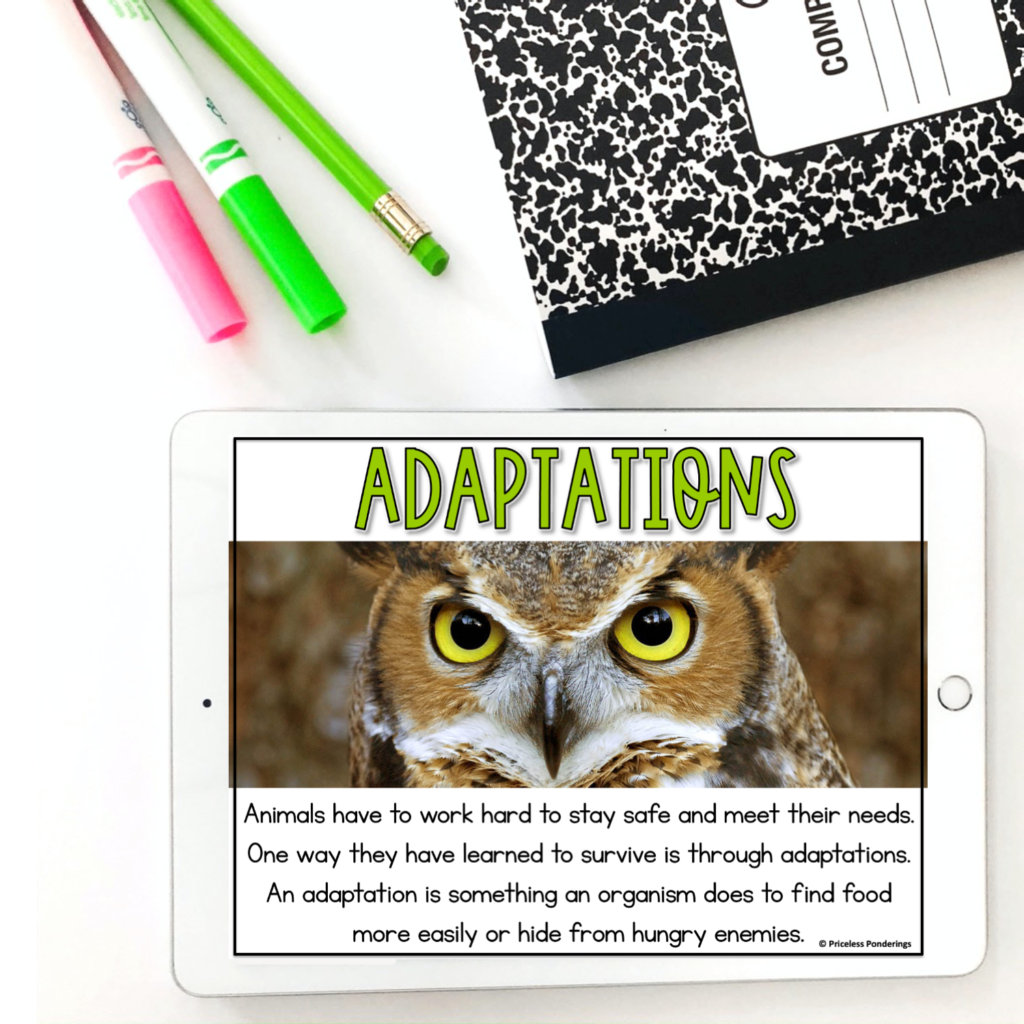
One of the first activities I have my class do at the beginning of a new unit in science is to watch a fun presentation on the topic. I like the class to hear about what we are going to learn throughout the week.
Here are the main topics we learn about when discussing adaptations:
- What adaptations are
- Why animals need adaptations to survive
- Behavioral vs. Physical adaptations
- Camouflage, mimicry, hibernation, and migration
Read about Animal Adaptations
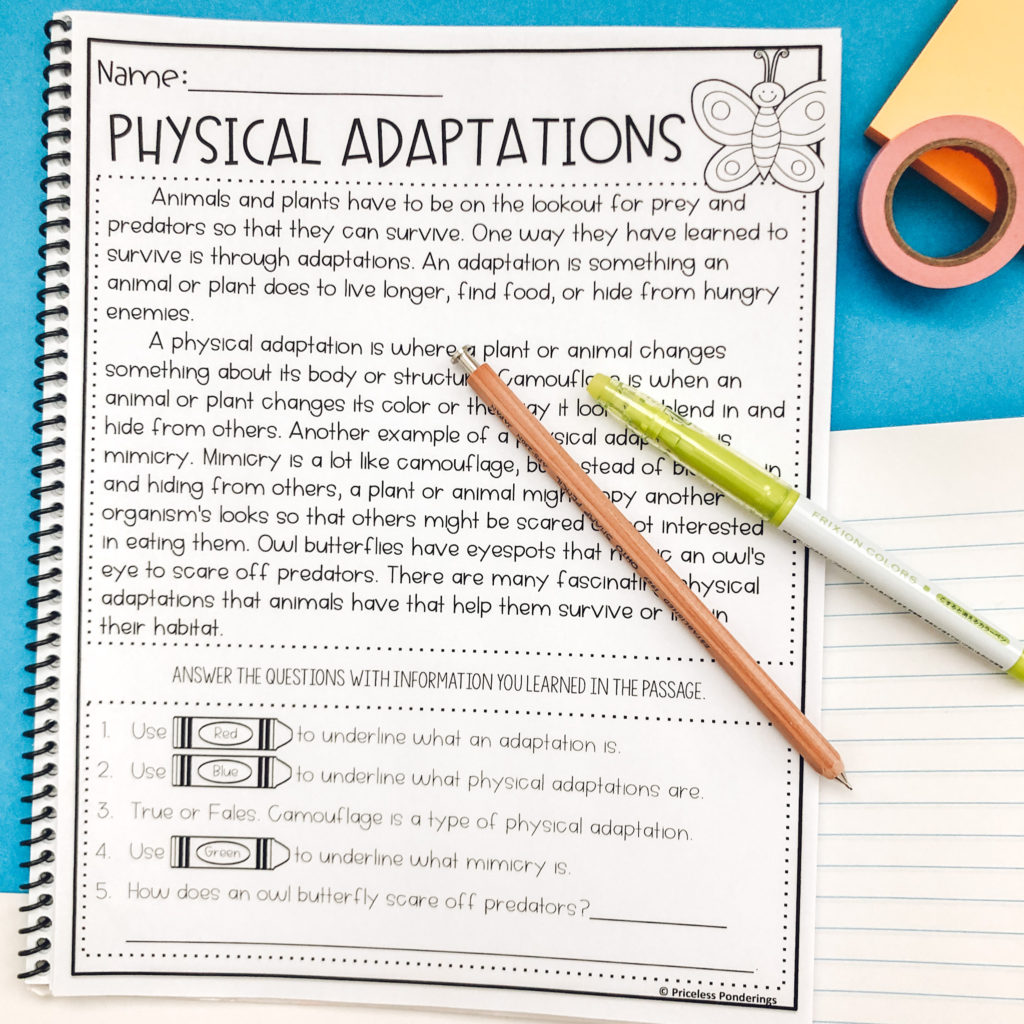
A great way to teach science is by reading about it. Incorporating language arts and math into your science curriculum can help you squeeze in science topics without running out of time in the day.
When teaching science incorporating reading is always a great idea, I love reading books and providing comprehension pages to help my students learn about the topic.
Behavioral vs. Physical Adaptations
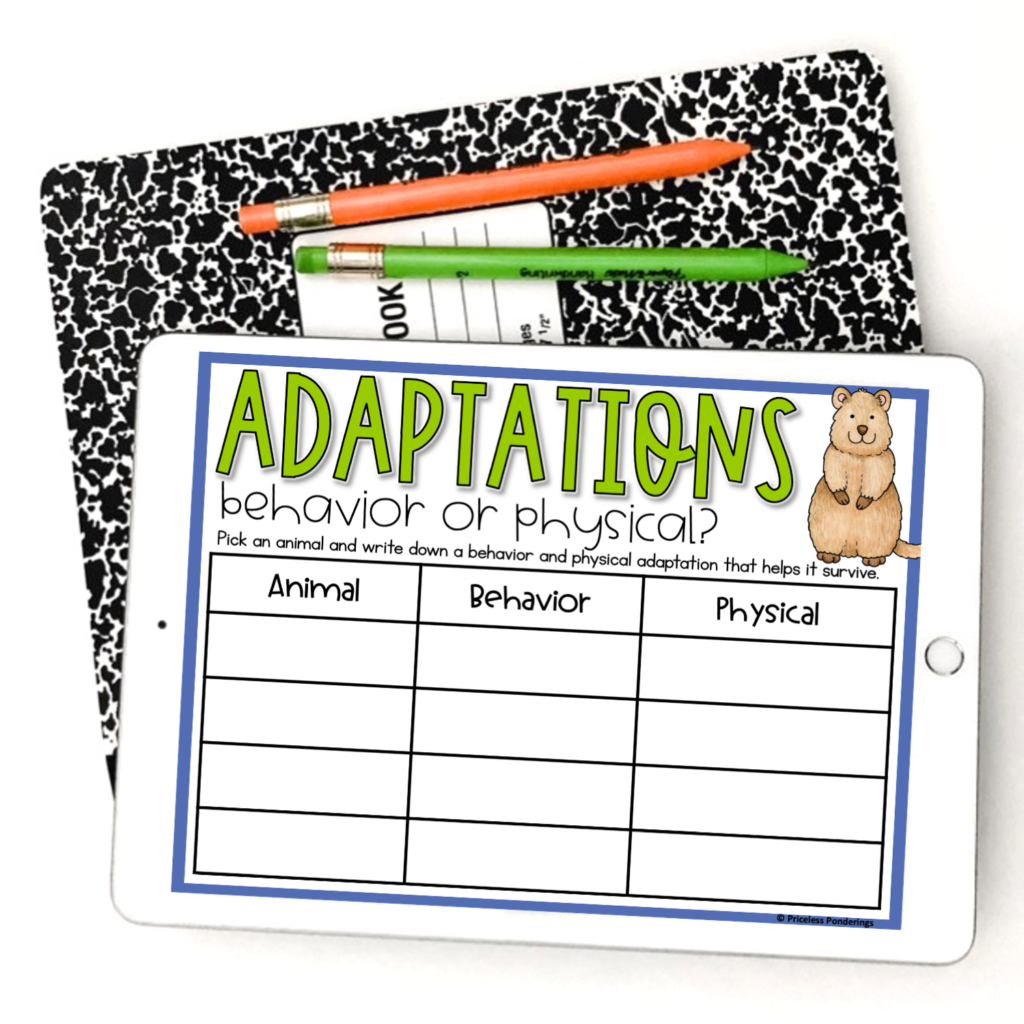
When teaching activities for animal adaptations, I like to start off by teaching the difference between behavioral and physical adaptations. This digital activity is a fun way for students to learn about animals and their different adaptations.
This digital activity is from my Animal Adaptations Google Slides for Distance Learning.
Camouflage and Mimicry
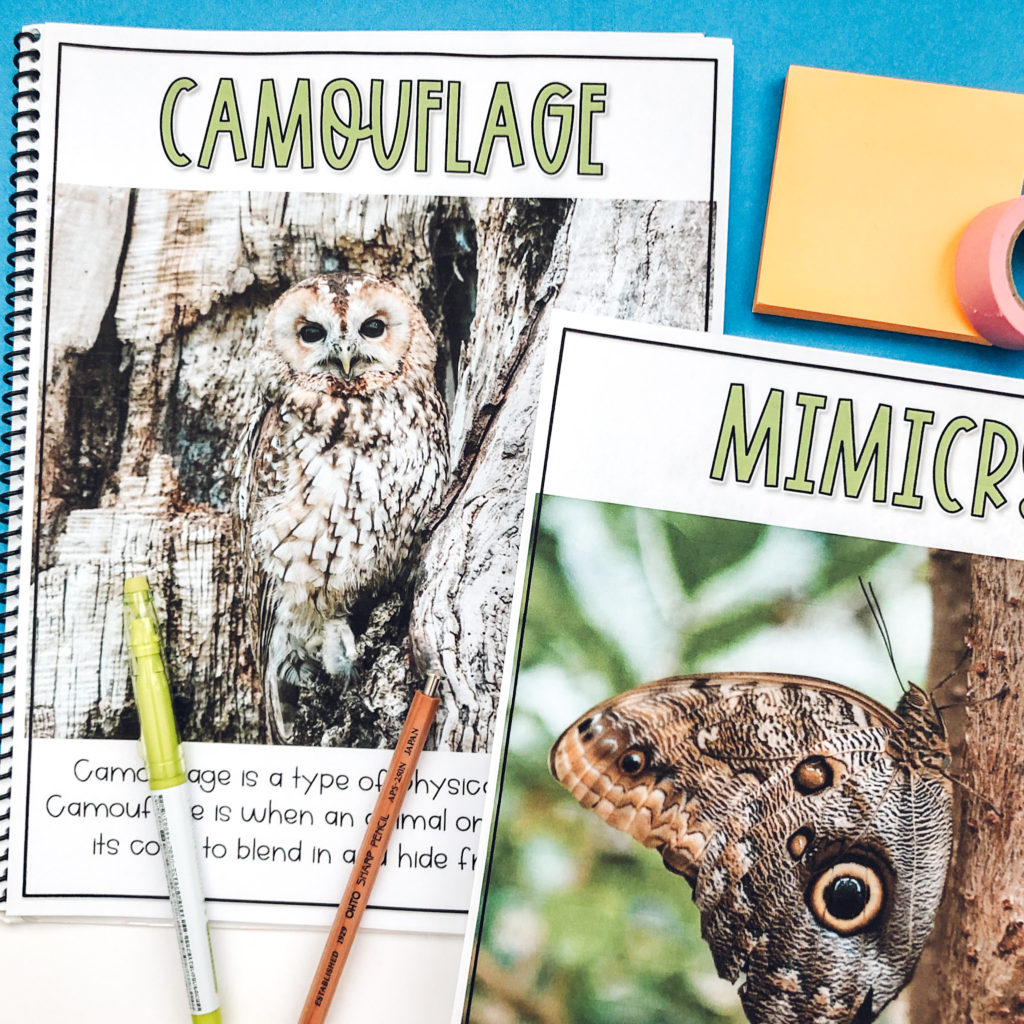
The two types of physical adaptations that I teach my class are camouflage and mimicry. Your students will probably have some prior exposure to these adaptations but teaching them the difference between the two is an important addition to the activities for animal adaptations that you choose.
Camouflage is when an animal or plant changes its color to blend in or hide from another animal.
Mimicry is when a plant or animal copies the way another organism looks so that others are scared of them.
Snag a free roadmap to help you stay on track throughout the year when you are lesson planning. HERE!

Hibernation and Migration
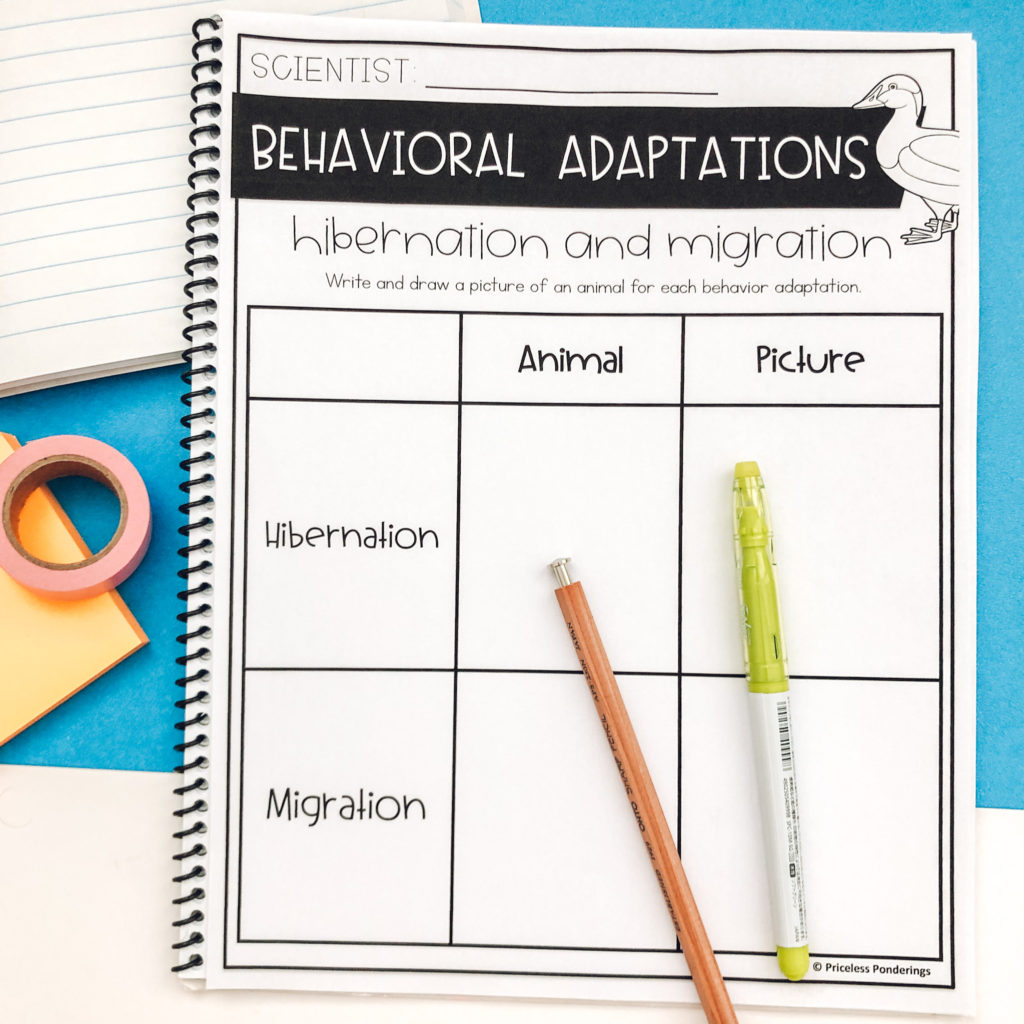
After my class has learned about physical adaptations, I move on to behavioral. Hibernation and migration are two adaptations that I focus on. Your class has probably heard of these as well. This activity is a fun way for students to list out different animals that either hibernate or migrate then draw a picture as an example. Giving students books on different animals or having them use a website to collect information is a great way to make this more engaging.
Hibernation is when an animal sleeps for a long time to save energy, usually during colder months.
Migration is when an animal moves each year to another habitat to find food or warmer weather.
Animal Discovery Project
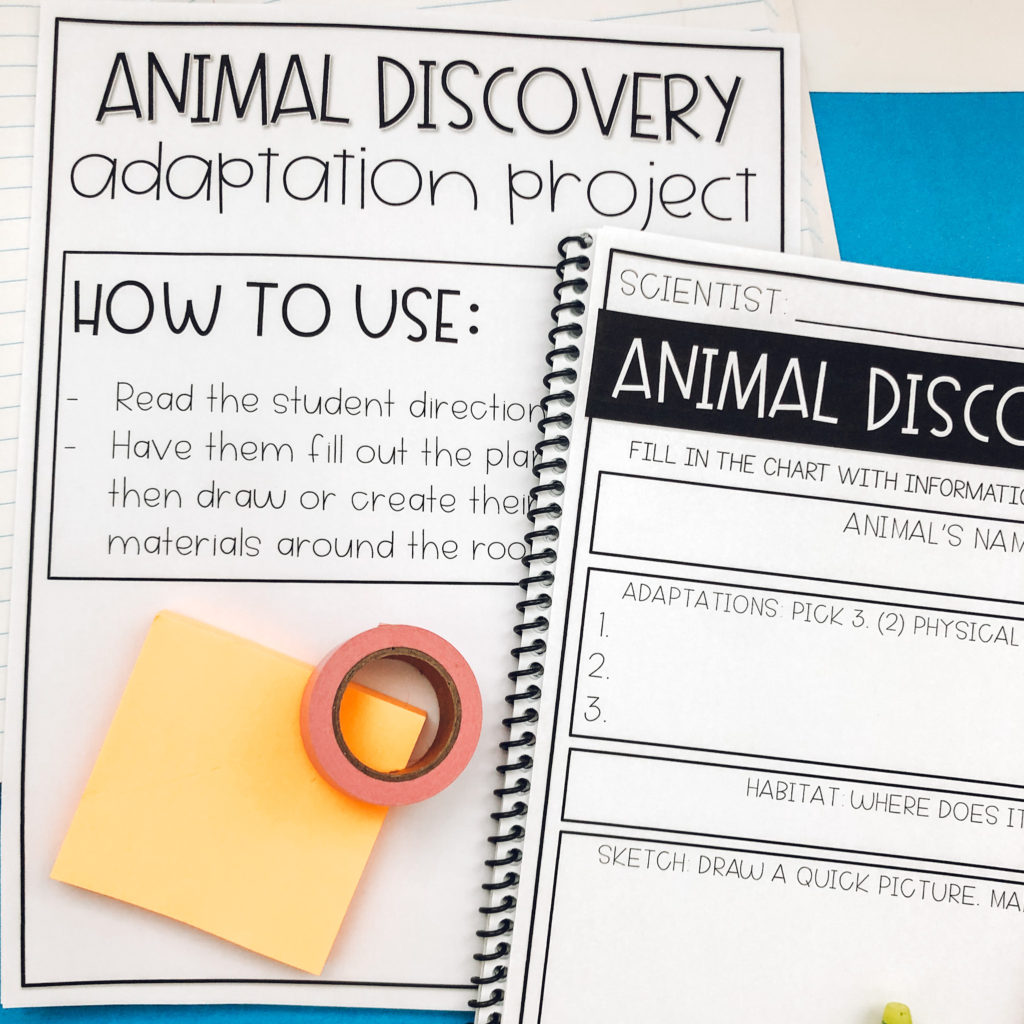
Once my class has learned why animals have adaptations, I have students reflect on the different types of adaptations animals have by creating a super creature!
I give students this planning sheet and go over the instructions. The students draw a new creature they have discovered in a habitat of their choice. They come up with three adaptations; at least (2) physical and (1) behavioral that the animal uses to survive.
I like to either take the planning page as a grade, or use the planning page to build the animal they discovered. In the past, my class has used construction paper and materials from around the room. This activity may take 2 or 3 days, but when they are done, the students can pretend they are visiting a zoo by walking around the room and taking notes on their classmates’ new animal discoveries.
Writing Activities for Animal Adaptations Lessons
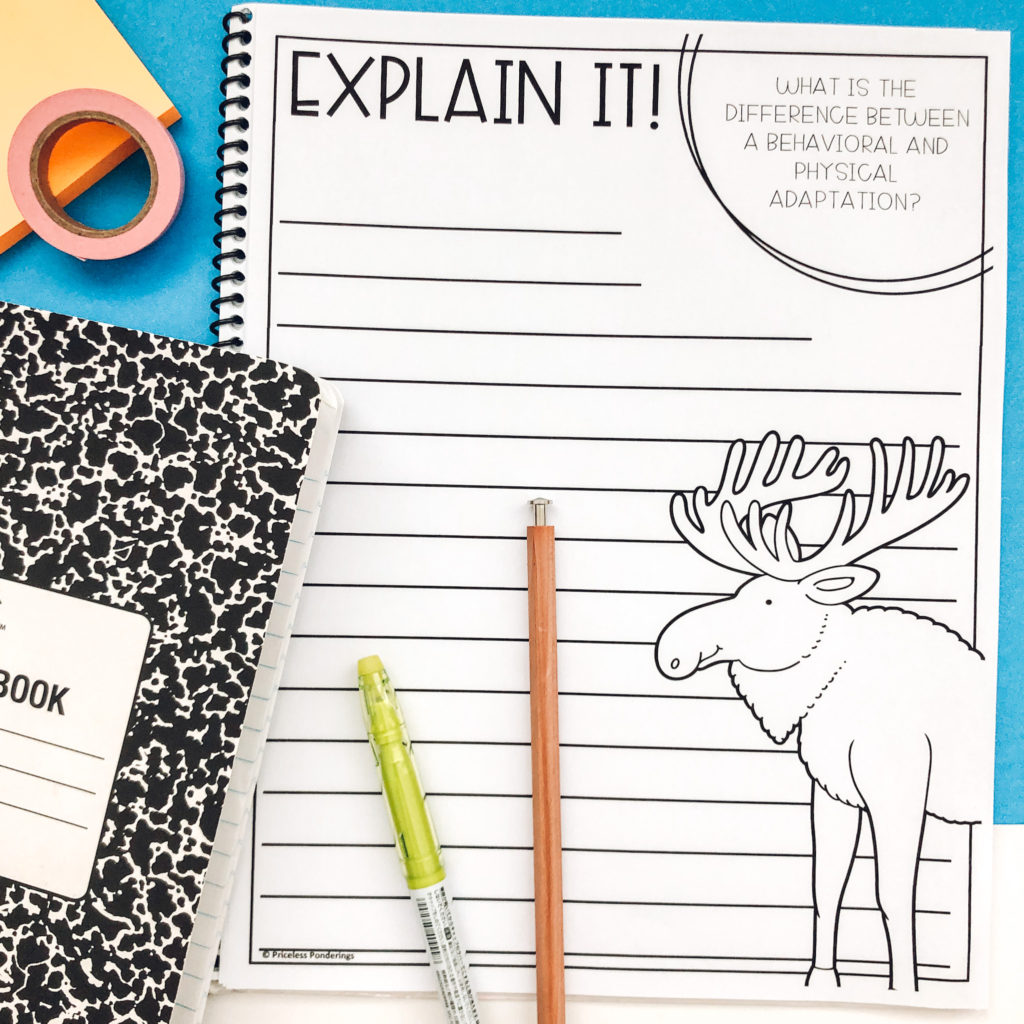
Writing is another way I love to get my students to learn about science. Having students explain the differences between behavioral and physical adaptations by writing a small paper can help them better conceptualize the topic, especially if they add in their own drawings or diagrams to support their ideas.
Writing in science is a fun way to incorporate the vocabulary and the content into your classroom curriculum.
Putting it All Together
Planning to teach activities for animal adaptations can be overwhelming because it is time-consuming. There is so much content to cover and state standards to meet. Having 4 to 5 engaging activities that teach students about animal adaptations can help you capture your class’s interest.
Also, keeping your lessons short and sweet will help diminish the chances of them becoming bored and uninterested in the activities. For low prep worksheets and premade lessons, check out the resources in my store.
Shop This Post
Students will have fun learning about different animal adaptations with these activity ideas. For activities for animal adaptations, check out my Animal Adaptations Activity pack for low-prep worksheets and lesson plans your students will love. I also have a digital version HERE!
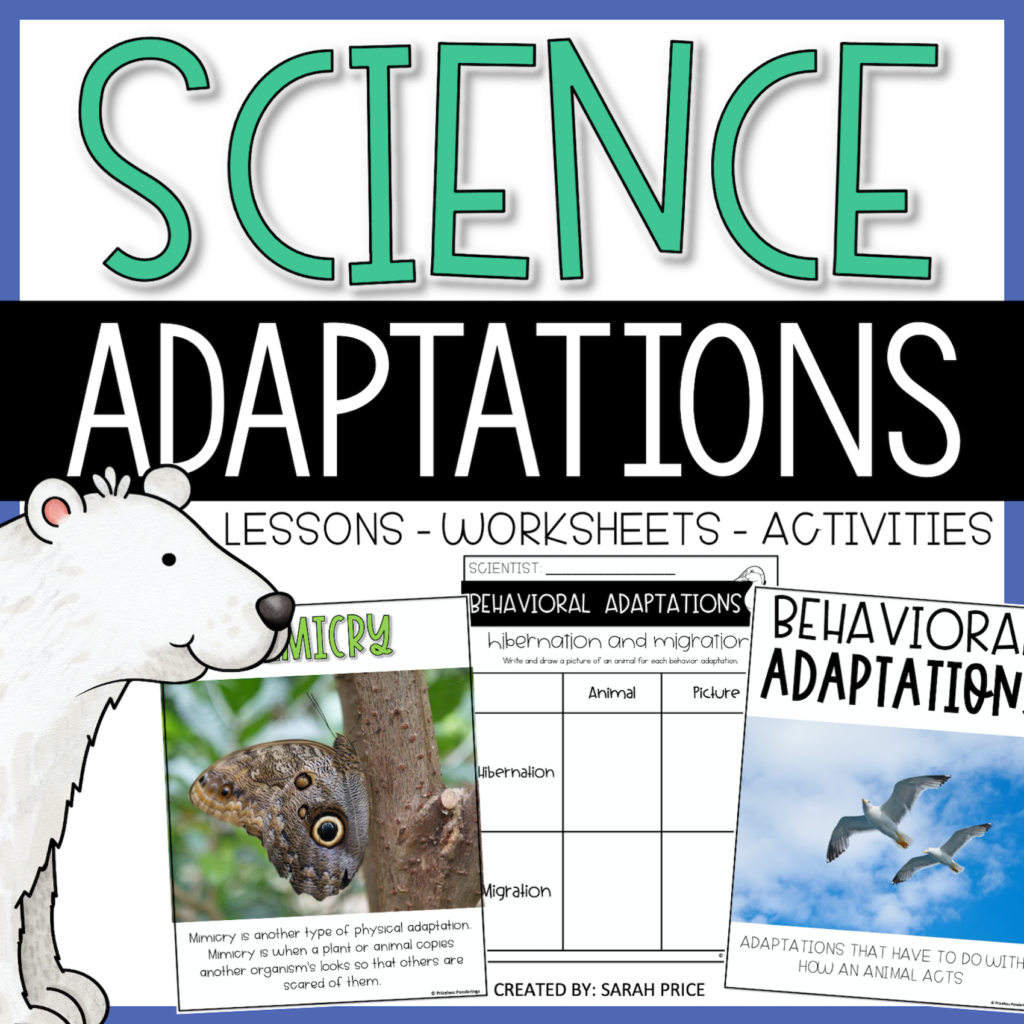
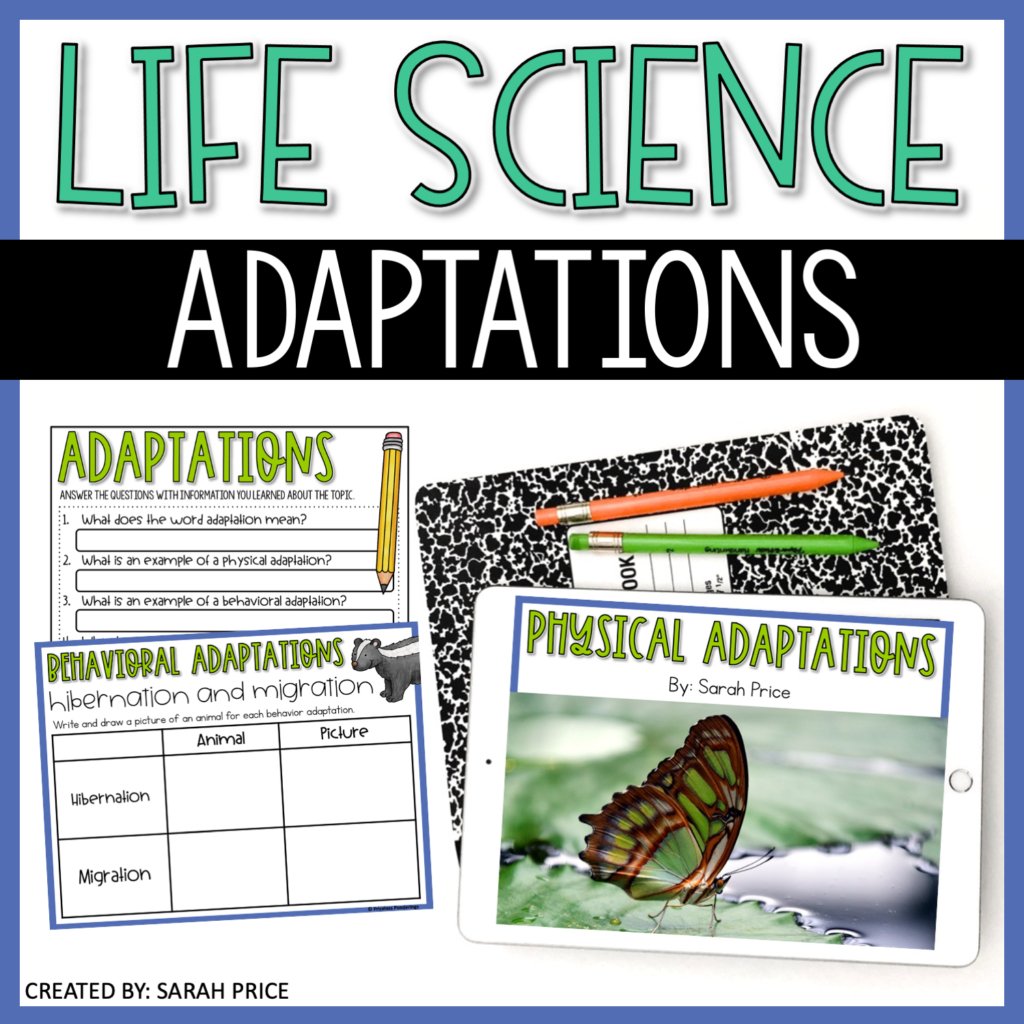
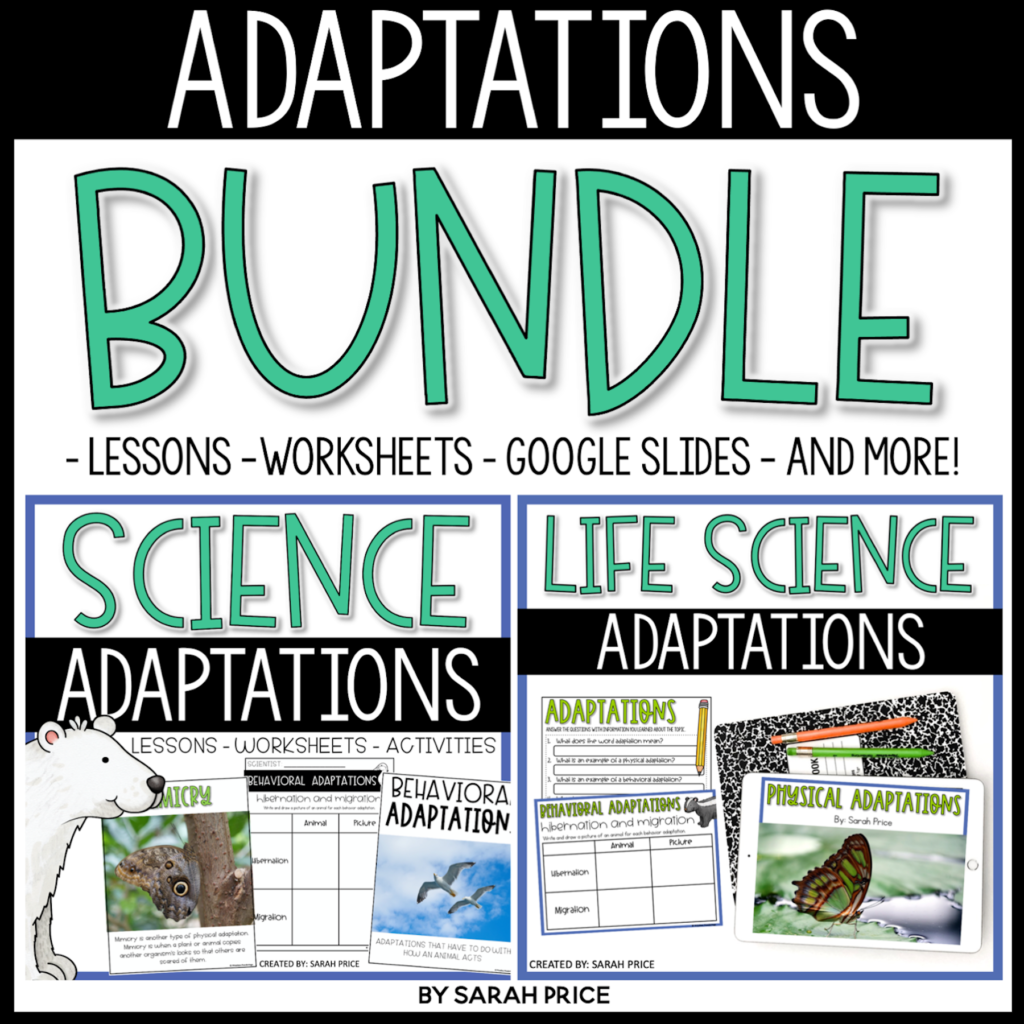
For More Science Activities, Visit These Posts!
HANDS-ON POLLINATION ACTIVITIES FOR ELEMENTARY SCIENCE
TIPS FOR TEACHING LIVING VS. NONLIVING THINGS
LOW-PREP HABITAT ACTIVITIES FOR ELEMENTARY SCIENCE
SAVE THIS PIN
Be sure to save this pin so that you can easily find these ideas when you need activities for animal adaptations.
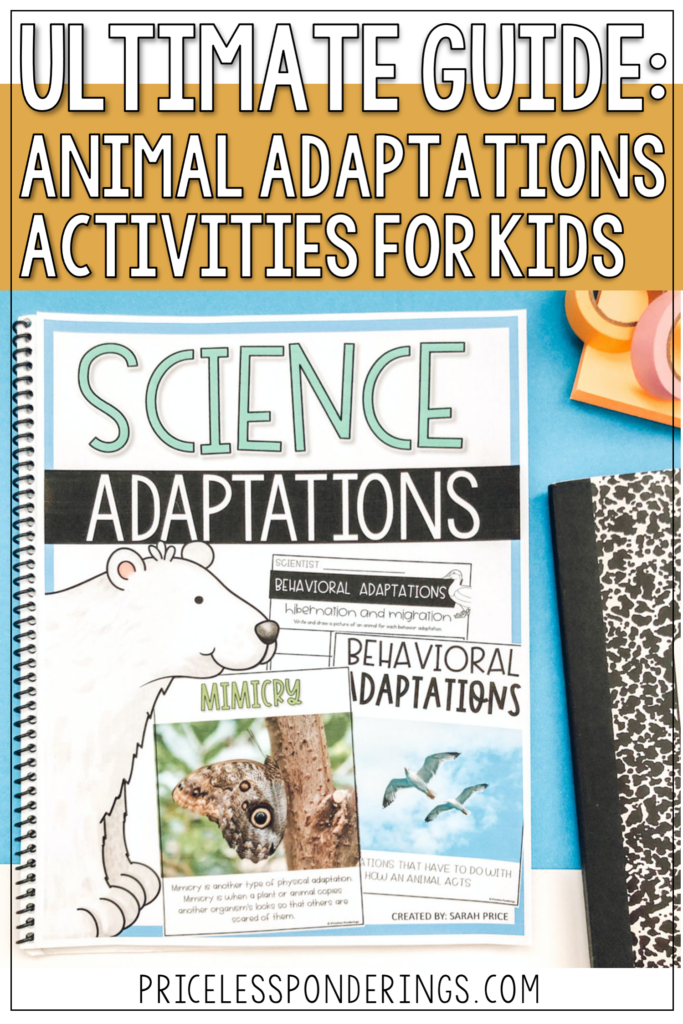
Happy teaching!
Sarah



